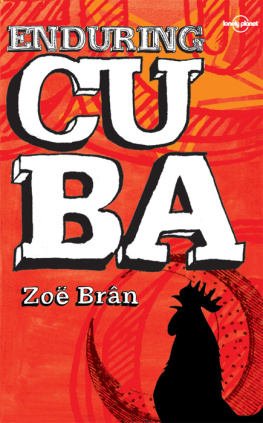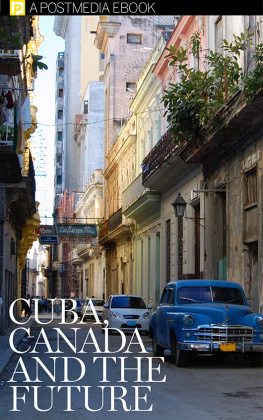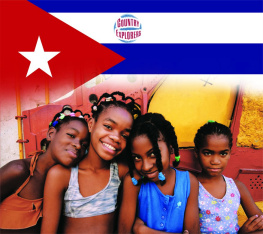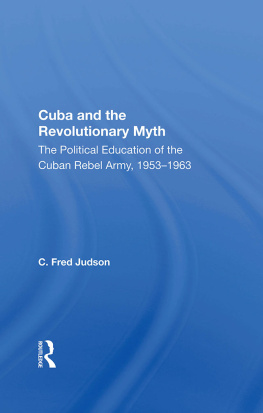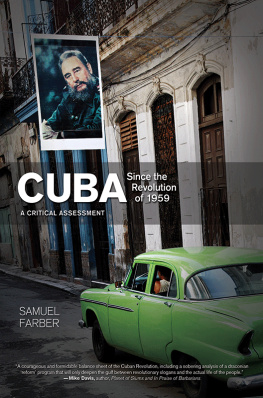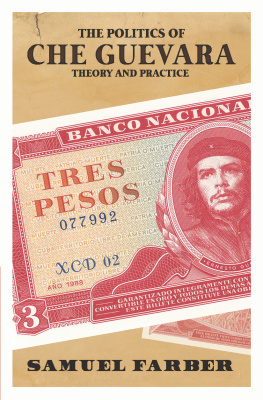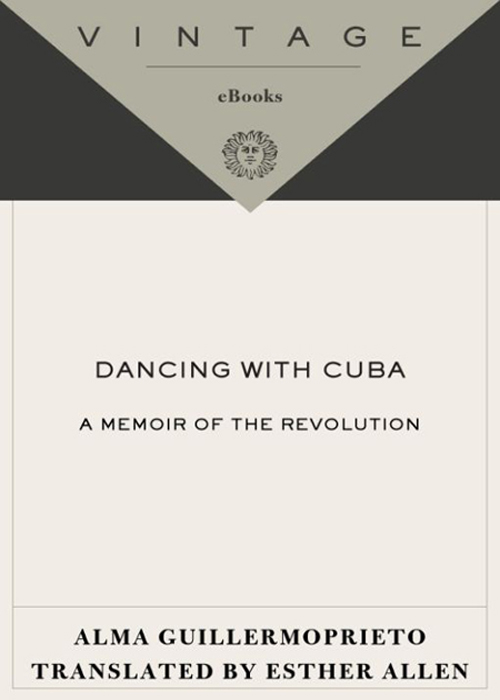

Table of Contents
Pa que bailen los muchachos
Acclaim for Alma Guillermoprietos
Dancing with Cuba
A pleasure to read, full of humanity, sly humor, curiosity and knowledge.
Katha Pollitt, The New York Times Book Review
Written with the deftness that has made Guillermoprietos dispatches in The New Yorker some of the best writing on Latin America, Dancing with Cuba makes a significant contribution to the in-depth understanding of contemporary Cuba.
TheMiami Herald
Few dancers write memoirs, and so the world of dance remains an elegant mystery to many of us.... This is a tale, then, of artists and poets, dancers and architectsbewildered, always in conflict, trying to keep alive standards which they knew were essential, but which were also suspect, not to say dangerous.
Doris Lessing, The New York Observer
An honest memoir filled with the struggles most young people wrestle with: love, identity and idealism.
USAToday
The memoirs greatest strength is its ability to infect the reader with the feverish, hopeful and heartbreaking sense of the early days of the revolution.
Elle
Guillermoprieto... is a sensualist and a dramatist in prose.... Dancing with Cuba seethes with confusion, passion, and anger.
TheVillage Voice
As much a pleasure as an astonishment.
Harpers
Guillermoprieto is one of the most perceptive commentators on Latin America, a writer whose political analysis is sensitive to culture and history and punctuated by telling details that illuminate larger dilemmas. This bittersweet remembrance of youthful hopes and disillusionment, of the contrast between the idealism of revolutionary aspirations and the clay feet of day-to-day revolutionaries, is set against the story of six months she spent in Cuba as a dance teacher in 1970.... This marvelous book is almost impossible to put down.
ForeignA fairs
Gracefully told... splendidly rendered into English by Esther Allen.
LosAngeles Times Book Review
A vivid chronicle.
TheBoston Globe
In exploring her own evolving relationship to art and politics... [Guillermoprieto] proposes a genuinely original take on history. To the traditional discussion of events and ideologies she adds psychology, rhetorical analysis, and, most provocatively, ideas about how ones physical body participates in the experience of cultural identity.
Sarah Kerr, The New York Review of Books
[A] beautifully written novelistic memoir.
SanAntonio Express-News
A compelling look backfrom the safe wisdom of middle ageat the role a revolution played in transforming this young dancer into a journalist.
Sacramento News & Review
An insightful account of a time when the revolution was past its dawn but had not yet descended into cynical political bankruptcy.... Also a powerful memoir of a sometimes painful journey that thoroughly unraveled its authors life, turning a nave young artist into a confusedly politicized adult.
The Economist
Excellent.... Guillermoprieto writes so well. Newsday
Guillermoprieto brings out the flavor of the time... insightful.
StreetWeekly (Miami)
[Dancingwith Cuba] is a loose mix of half-memories, reporting and musings on the place and meaning of art.... The mix works for some of the same reasons Guillermoprieto had such difficulty in Cubathe sophisticated, intelligent singularity of her voice, her insistence on recognizing lifes grays and her sly wit.
AssociatedPress
A bittersweet page-turner.
DanceTeacher magazine
[Dancingwith Cuba] is elegantly written and captures both the spirit and rhythms of Cuba during a period of dramatic change and political upheaval.
Tucson Citizen
A vivid memoir.
TheWall Street Journal
In recalling and reconstructing those days, [Guillermoprieto] has given us a convincing portrait of a young woman torn between her sympathy for those in need and her desire to do nothing except her art, between her conviction that the Castroites were trying to do good and her revulsion at their rhetoric, their methods and their very selves.
TheWashington Post Book World
Prologue: After Havana
More than three decades ago I spent six months teaching modern dance in Cuba. From that experience Ive retained only my fragmented memories and a few concrete souvenirs that help me prove to myself, when I have doubts, that I really did go on that journey that so thoroughly unraveled my life.
Among the shards that survive is a box made of tropical wood inlaid with silver thread: the word vuelve (come back) has been clumsily engraved with a knife or nail inside the lid. Next, a spiral notebook: in the few pages of it that are left, I find notes from a teachers meeting, a few other reflections, and the originals of the letters I wrote to my students at the end of the course. Those letters were of no use to me at all when it came to reconstructing my stay in Cuba: I couldnt match the students in my memory with the names that appear in the notebook; nor, to my embarrassment, was I able to read all the way through any of the letters, written by the inept young woman I once was.
For evidence that my time at the dance school of the Escuelas Nacionales de Arte wasnt as disastrous for those kids as it ended up being for me, I have to turn to the little wooden box, which the administrative staff gave me on the last day of class, and to another little box made of white cardboardthe kind a rosary would come inthat was my gift from the students. The day before, in farewell, I had given them two boxes of chocolates, an exceptional luxury to which only we foreigners were granted access, thanks to a special ration card that authorized us to make such exotic purchases in a special store. When one of the students saw the chocolates, she instructed the others never to eat them but to keep them in eternal memory of me. Twenty-four hours later I was extraordinarily relieved to see that they had disappeared down to the last sweet. In their place the students gave me the white box: inside was a kind of crude puppet made with thread and the foil used to wrap the chocolates. A few years ago I discovered that although the box was still in its place, along with another of that eras luxuriesthe cotton in which the doll was wrappedI had lost an essential component of the gift: the lid, on which the students had written their names in tiny letters.
With nothing to go on but this fistful of tatters, it would be absurd to claim that the following pages are a reliable historical account of the events that took place in my life during those six months. Yet this is not a novel. It is a faithful transcription of my memories, some of them hazy, others riddled with holes left by the passage of the years, others patched up by time and the filters of experience and distance, and still others, no doubt, completely invented by the stubborn narrator we all have within us, who wants things to be the way they sound best to us now, and not the way they were.
I must suppose that all the dialogue here is invented, though it seems to me to have been dictated from some intact corner of memory. The letters are reconstructions. As far as possible, Ive tried to protect the potential victims of my memory by changing names and assembling composite characters, notably in the case of Eduardo the guerrilla and his successors, but in the case of the historical figures and the school staff, this made no sense. Elfriede Mahler, Lorna Burdsall, Teresa Gonzlez, and Mario Hidalgo (as well as Roque Dalton, Oscar Lewis, and the legendary and now deceased Manuel Pieiro) are who they are. I deeply regret that Elfriede is no longer alive to defend herself from what in all certainty are the many injustices my animosity continues to inflict on her.
Next page

